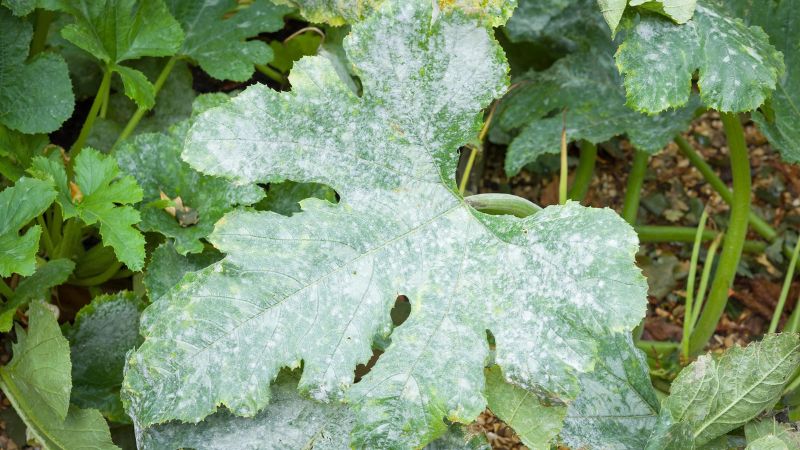Welcome to our guide on preventing common garden diseases! Maintaining a vibrant garden can be challenging when faced with potential threats from diseases. However, with the right knowledge and proactive measures, you can protect your garden and ensure a bountiful harvest. In this article, we’ll provide you with 11 effective tips to keep your plants healthy and disease-free. From proper plant selection to implementing preventative techniques, we’ve got you covered. Let’s dive in and safeguard your garden against common diseases, allowing you to enjoy the beauty and productivity of your outdoor oasis!
11 Tips To Prevent Common Garden Diseases
1. Choose Disease-Resistant Varieties
Selecting plant varieties that are naturally resistant to common garden diseases is a proactive step towards preventing outbreaks. When purchasing seeds or seedlings, look for varieties labeled as disease-resistant. These plants have been bred specifically to withstand common pathogens, reducing the likelihood of infection. Disease-resistant varieties are available for a wide range of crops, including tomatoes, cucumbers, squash, and more. By starting with resistant plants, you’ll establish a stronger defense against potential threats in your garden.
Also Read: The 9 Amazing Ways Organic Improves Soil Health
2. Practice Crop Rotation
Implementing a crop rotation schedule is a time-tested method for preventing the buildup of soil-borne pathogens. Rotating crops from different plant families in designated areas of your garden each season helps disrupt disease cycles. For example, avoid planting members of the same family, such as tomatoes and peppers, in the same location year after year. Instead, rotate them with unrelated crops like beans or lettuce. This practice deprives pathogens of their preferred hosts, reducing the likelihood of disease recurrence and promoting soil health.
3. Maintain Proper Plant Spacing
Proper spacing between plants is essential for good air circulation and preventing the spread of diseases. Overcrowded plants are more susceptible to fungal infections, as they provide ideal conditions for moisture retention and limited airflow. Follow spacing recommendations provided on seed packets or plant labels, and avoid overcrowding beds or containers. Adequate spacing not only reduces the risk of disease but also allows plants to access sufficient sunlight, nutrients, and water, promoting overall vigor and productivity.
4. Ensure Adequate Drainage
Poor drainage can lead to waterlogged soil, creating an environment conducive to root rot and other fungal diseases. To prevent waterlogging, choose well-draining soil mixes and avoid compacting the soil around plant roots. Raised beds or containers can also improve drainage, especially in areas with heavy clay soils. Additionally, avoid overwatering plants, as excess moisture can exacerbate disease problems. Monitor soil moisture levels regularly and adjust watering practices accordingly, aiming for consistent but not saturated soil conditions.
5. Practice Good Garden Hygiene
Keeping your garden clean is essential to stopping the spread of illness. Remove diseased plant debris promptly, including leaves, stems, and fruits affected by fungal or bacterial infections. Dispose of infected plant material in the trash or by burning, rather than composting, to prevent disease recurrence. Regularly sanitize gardening tools, such as pruners and stakes, with a solution of bleach or rubbing alcohol to prevent cross-contamination between plants. By practicing good garden hygiene, you’ll minimize the risk of disease spread and promote a healthier growing environment.
6. Mulch to Suppress Weeds and Disease
Applying a layer of organic mulch around your plants offers multiple benefits, including weed suppression and disease prevention. Mulch helps conserve soil moisture, regulates soil temperature, and inhibits weed growth, reducing competition for nutrients and sunlight. Additionally, organic mulches like straw, shredded leaves, or wood chips create a barrier between soil and plant foliage, minimizing contact with pathogens. As the mulch breaks down, it enriches the soil with organic matter, further enhancing its fertility and resilience against diseases.
7. Monitor and Control Pest Populations
Pests can weaken plants and make them more susceptible to diseases by causing physical damage and transmitting pathogens. Implement integrated pest management (IPM) strategies to monitor and control pest populations in your garden. Use insect traps, handpicking, or natural predators to manage pest outbreaks, minimizing the need for chemical pesticides. By reducing pest pressure, you’ll help maintain plant health and resilience against diseases. Regularly inspect plants for signs of pest activity, such as chewed leaves or stippling, and take appropriate action to mitigate potential damage.
8. Apply Organic Disease Controls
Organic disease control methods offer effective alternatives to chemical pesticides, promoting environmental sustainability and minimizing harm to beneficial organisms. Options such as neem oil, copper fungicides, and Bacillus thuringiensis (Bt) are approved for organic gardening and can effectively manage common garden diseases. When using organic treatments, follow label instructions carefully and apply them preventatively or at the first sign of disease symptoms. These natural remedies help suppress pathogens while supporting a balanced ecosystem in your garden.
9. Provide Proper Nutrient Balance
Maintaining proper nutrient balance in your soil is essential for promoting plant health and resilience against diseases. Conduct soil tests periodically to assess nutrient levels and pH, and amend the soil as needed to optimize fertility. Balanced nutrition supports strong root development, vigorous growth, and increased disease resistance in plants. Avoid over-fertilization, as excessive nitrogen can promote lush foliage growth at the expense of disease resistance. Instead, focus on providing a diverse array of nutrients through organic amendments, compost, and foliar sprays, tailored to your specific plant needs.
10. Monitor Weather Conditions
Weather patterns can influence the prevalence and severity of garden diseases, particularly those caused by fungal pathogens. Pay attention to local weather forecasts and seasonal climate trends to anticipate potential disease outbreaks. During periods of prolonged rainfall or high humidity, fungal diseases like powdery mildew and blight are more likely to occur. Take proactive measures such as providing additional airflow, avoiding overhead watering, and applying preventive fungicides if necessary. By staying vigilant and adapting your gardening practices to prevailing weather conditions, you can minimize the impact of environmental factors on disease development.
Also Read: 9 Sustainable Irrigation Techniques For Organic Farms
11. Seek Professional Advice When Needed
If you encounter persistent or severe disease problems in your garden despite implementing preventive measures, don’t hesitate to seek professional advice. Cooperative Extension offices, master gardeners, and certified horticulturists can provide expert guidance and diagnostic services to help identify and manage garden diseases effectively. They can offer tailored recommendations based on local conditions, plant species, and specific disease symptoms. By consulting with knowledgeable professionals, you’ll gain valuable insights and resources to address complex disease issues and safeguard the health of your garden for seasons to come.
Conclusion
Protecting your garden from common diseases is essential for a thriving and fruitful harvest. By following the 11 tips outlined in this guide, you’ll be well-equipped to prevent and manage garden diseases effectively. Remember to stay vigilant, practice good garden hygiene, and monitor your plants regularly. With a little effort and the right strategies, you can enjoy a healthy and vibrant garden all season long. Happy gardening!
FAQs
What are the most common garden diseases?
Common garden diseases include powdery mildew, damping-off, blight, rust, and various fungal and bacterial infections.
How can I prevent garden diseases naturally?
Natural prevention methods include proper plant spacing, good air circulation, regular sanitation, mulching, and using disease-resistant plant varieties.




